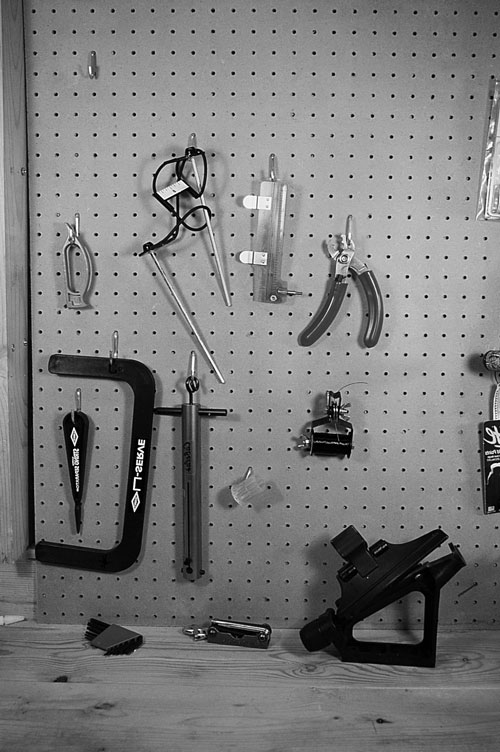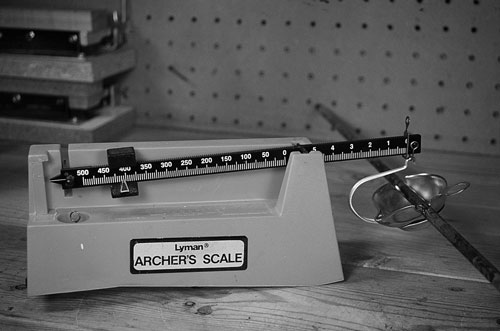 I fondly remember my eighth grade shop teacher for two things: The time he tipped over in his chair and broke his arm as he lectured the class on safety, and for repeatedly telling us to “use the right tool for the job.” He was on target with his sage advice on both accounts, though the chair-tipping incident convinced us he was “not the sharpest tool in the shed.”
I fondly remember my eighth grade shop teacher for two things: The time he tipped over in his chair and broke his arm as he lectured the class on safety, and for repeatedly telling us to “use the right tool for the job.” He was on target with his sage advice on both accounts, though the chair-tipping incident convinced us he was “not the sharpest tool in the shed.”
Compound bows are complex, highly engineered machines subjected to regular, high levels of stress. Quite simply, they need frequent attention, if not tender loving care. Having the right tools for the job ensures bowhunters can provide the necessary attention to keep bows functioning properly, save time and money, and even save the day if a malfunction occurs in the field.
Beyond that, bows are such intimately personal items. Your bow is set up (or should be) to fit you and no one else, in accordance with your individual size and frame, as well as your unique shooting form, style of hunting, and personal preferences.
Major repairs may best be left to a trained professional, but routine maintenance such as timing, cam orientation, lubrication, changing strings, and installing peeps, nock locators and string loops, silencers and servings, can and should be performed by bowhunters.
Which tools are essential and which are less important will vary among individuals. Ultimately, your budget, the amount of shooting you do, and intangibles such as the amount of time you’re willing to spend driving back and forth to the pro shop, and the degree to which you can live with the risk of missed days afield, will determine which tools you simply must have.
Essential Tools For Your Toolbox
At the most basic level, a set of hex wrenches is required for functions as simple as installing, tightening, or adjusting sights, rests, and quivers, or changing draw weight. Several multipurpose tools include hex wrenches, screwdrivers, and an adjustable wrench. These are convenient, but I find some components are difficult to access with these tools, so I keep several sets of loose hex wrenches on hand as well, with a few in my day pack, my bow case, my field kit, and even the pockets of my hunting pants and jackets.
The only alternative to a string server is to take your bow to the shop every time the serving needs repair. Serving a bowstring efficiently requires some practice, but it’s not rocket science. Any bowhunter can learn with a little practice.
The entire serving process is much easier with a string and cable separator, which enables separating the string from the cables to serve strings, as well as installing peep sights and string silencers.
See page 2 for more.
Bow square and center shot gauges are relatively inexpensive and can save time and frustration in bow tuning. Bowhunters often make two mistakes in using these tools. The biggest is assuming the bow is tuned because these tools have been used. That is almost never the case. They will put you in the neighborhood, though, if properly used, which leads to the second biggest problem—misuse. Not every bow launches arrows from the center. If there is an offset, the manufacturer will usually indicate this in a manual. In that case, take into account the proper offset when using the center gauge.
 How important is a grain scale? Highly competitive tournament shooters need to ensure arrows are within a few grains of one another in weight. But some bowhunters, too, enjoy an extra smidgen of confidence in knowing their arrows are closely matched. And you might occasionally find field points, broadheads or other arrow components on a back shelf of your bench and find yourself wondering if it’s a 100-grain or 125-grain model. over the years, if not for the scale on my bench, I surely would have thrown out a lot of field points, broadheads, or inserts for fear they didn’t match the others I was using.
How important is a grain scale? Highly competitive tournament shooters need to ensure arrows are within a few grains of one another in weight. But some bowhunters, too, enjoy an extra smidgen of confidence in knowing their arrows are closely matched. And you might occasionally find field points, broadheads or other arrow components on a back shelf of your bench and find yourself wondering if it’s a 100-grain or 125-grain model. over the years, if not for the scale on my bench, I surely would have thrown out a lot of field points, broadheads, or inserts for fear they didn’t match the others I was using.
Some operations seem to require three hands even with some sort of bow holder or vise; without such a device, they can be nearly impossible. At the simplest and least expensive level, some treestand bowholders can be mounted to a bench to securely hold a bow upright for things like finding center shot or nock point or installing sights and other accessories.
The next step up would be an adjustable bow vise. Though a little pricier, these hold bows very securely in an upright or horizontal position, and can be swiveled in any direction, making every part of the bow readily accessible.
Every bowhunter needs a fletching jig. Even if you buy ready-to-shoot arrows, fletching needs to be replaced or repaired from time to time. Multi-arm jigs are faster, and this is important if you need a dozen arrows ASAP. If you use your jig for occasional repairs, or to experiment now and then with different fletching materials, lengths, or degree of helical, a single-arm jig will serve the purpose very well, at little cost. And, if you fletch with feathers and use fletching tape instead of glue, you can easily fletch a dozen arrows with a single-arm jig in about an hour.
Arrow spinners strike me as must-haves, especially for bowhunters using aluminum arrows and glue. Some bowhunters spend hours tuning and retuning their bows, when improper broadhead alignment is the real cause of inaccuracy. Yes, you can spin arrows in your hand or on a bench, but a spin tester is safer, faster, and more accurate.
A bow draw weight scale can be useful. Without it, any change in draw weight will leave you guessing the shooting weight. Inexpensive scales are available from the major mail order companies. I have not always found these accurate, but they are consistent. Calibrate them to a professional model, and you’ll know your draw weight within a pound or so.
A nock crimper or pliers is necessary for those who use nock sets.
Next: Useful, But Optional Tools






